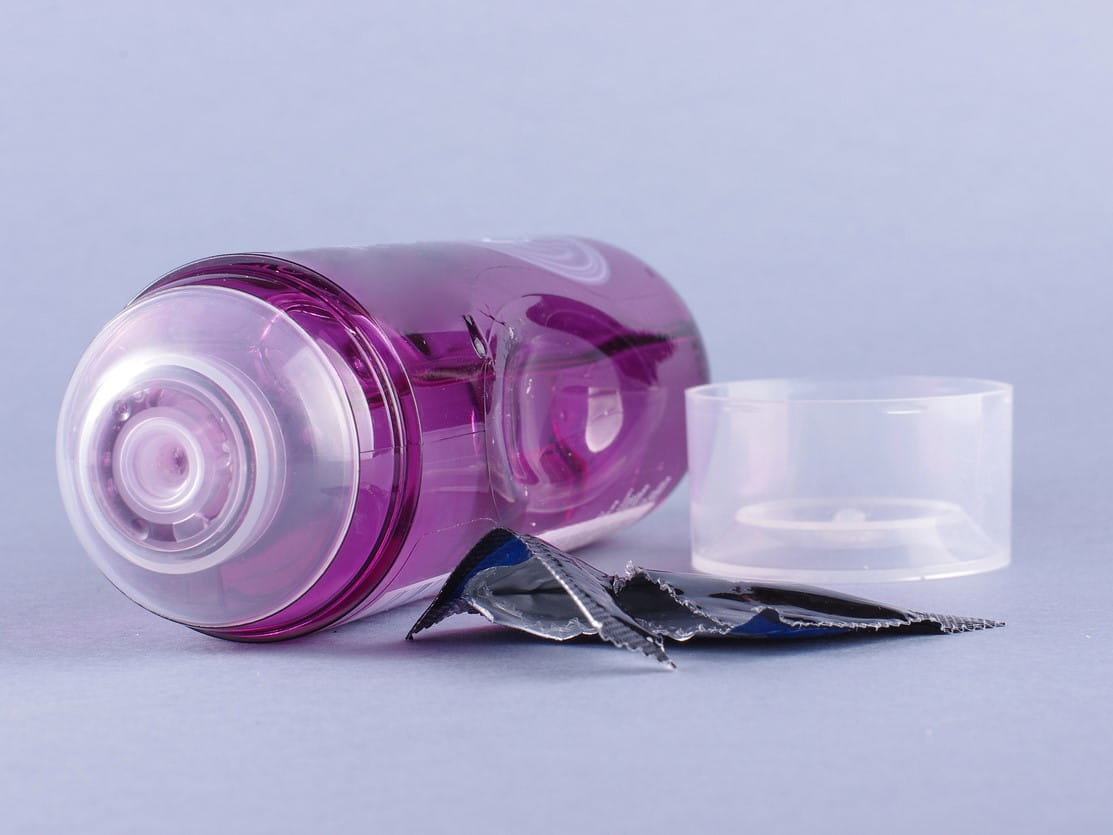Is Lube Safe to Swallow?

The Bottom Line
Personal lubricants come in many varieties but are generally safe when used correctly. The most common adverse effect from personal lubricants is irritation. Poisoning is unlikely, but depends on the specific active ingredients, the concentration of the active ingredients, and the amount and route of exposure. To prevent adverse effects, follow the manufacturer's guidelines for proper use.

The Full Story
Personal lubricants (commonly referred to as "lube") are used to protect against dryness and friction during sex or during medical procedures like when performing an ultrasound or when administering medications in the form of rectal or vaginal suppositories.
The two main forms of personal lubricants are water-based and silicone-based; a less common kind is oil-based.
Water-based lubricants contain secondary ingredients such as:
- a preservative and antimicrobial (methylparaben). Because water is a nutrient for microorganisms, this helps inhibit their growth and prevents the product from spoiling.
- a humectant. Humectants prevent the water from evaporating too quickly. The two most common humectants are glycerin and propylene glycol.
- a thickener. Generally, this is cellulose-based and non-poisonous.
Silicone-based lubricants are generally benign with proper use or if a small amount is swallowed because silicones are not absorbed into the body.
Oil-based lubricants can have various kinds of oils and might also be marketed as massage oils. They are less popular because they are not as easy to wash off and are not compatible with certain types of condoms, increasing the risk of condom breakage.
Other ingredients
There are many personal lubricant products on the market, with countless additional ingredients and customization of the fundamental base ingredient (whether it's water, silicone, or oil). Examples include adding menthol, caffeine, capsaicin (chemical found in chill peppers) or niacin for tingling effect, adding an anesthetic like lidocaine or benzocaine for numbing effect, or adding various kinds of flavoring.
Safety concerns and potential adverse effects
Adverse effects from personal lubricants depend on the specific ingredients, the concentration of these ingredients, and the amount and route of exposure.
When used as recommended by the manufacturer – whether for vaginal, penile, or anal application – personal lubricants are generally safe and well-tolerated. Some ingredients can cause irritation or sensitivity reactions in some people.
Several research studies have brought up two concerns. The first is regarding the glycerin and propylene glycol in personal lubricants. Glycerin and propylene glycol contribute to the osmolality (the given concentration relative to water) of the product. If the osmolality is high, the lubricant might pull water from the cells (e.g., the cells that make up the lining of the vaginal wall), causing the cells to shrivel, and this can lead to irritation. Irritation of vaginal or anal tissue could increase vulnerability to sexually-transmitted infections (STIs). Further studies are needed to fully understand the gravity of this effect (because the Food and Drug Administration does not regulate personal lubricants like medications, rigorous human studies are not available) and the risk should be weighed against the risk for tissue injury from not having adequate lubrication, which could also lead increased risk for STIs.
The second concern is the pH of the product. Neutral pH is 7. The lower the pH, the more acidic the product is. The higher the pH, the more alkaline it is. Healthy vaginal pH is around 3.8-4.5. There is a concern that if the pH of the personal lubricant does not match this, a lubricant could disturb the balance of the healthy vaginal flora.
Small and unintentional ingestion of a personal lubricant is unlikely to cause anything beyond mild stomach upset. However, it important to note that each product differs in its ingredients, and the amount swallowed dictates what, if any, symptoms occur. For instance, there would be concern for toxicity if there is misuse or ingestion of a lidocaine- or benzocaine-containing personal lubricant.
If swallowed, oil-based lubricants can cause nausea, vomiting, and diarrhea. If some enters the airway (aspiration), this can cause choking, coughing, and other respiratory problems.
To prevent adverse effects or poisoning from personal lubricants, follow the manufacturer's guidelines for proper use – including route of use – and storage. Discontinue use and consult your primary care physician if you experience irritation after use. Keep lubricants out of reach of children or pets and keep them in their original containers.
If you are concerned about an exposure to personal lubricants, check the webPOISONCONTROL® online tool for guidance or call Poison Control at 1-800-222-1222.Serkalem Mekonnen, RN, BSN, MPH
Certified Specialist in Poison Information
Poisoned?
Call 1-800-222-1222 or
Prevention Tips
- Follow the manufacturer's guidelines for proper use – including route of use – and storage of personal lubricants.
- Keep personal lubricants out of reach of children and pets.
- Keep personal lubricants in their original containers.
This Really Happened
A mother of an 11-month-old boy called Poison Control after she found him with a bottle of K-Y Lubricating Jelly. It appeared that he'd swallowed about half an ounce, but it was difficult to tell. The boy was symptom free at the time. Poison Control reassured the mother that the boy should tolerate the ingestion but might have mild gastrointestinal upset. When Poison Control contacted the mother the following day, she reported that the boy had experienced mild diarrhea but no other symptoms and that he was doing well.
For More Information
International Society for Sexual Medicine, What is a lubricant? [cited 2020 Nov 2].
References
Poisoned?
Call 1-800-222-1222 or
Prevention Tips
- Follow the manufacturer's guidelines for proper use – including route of use – and storage of personal lubricants.
- Keep personal lubricants out of reach of children and pets.
- Keep personal lubricants in their original containers.
This Really Happened
A mother of an 11-month-old boy called Poison Control after she found him with a bottle of K-Y Lubricating Jelly. It appeared that he'd swallowed about half an ounce, but it was difficult to tell. The boy was symptom free at the time. Poison Control reassured the mother that the boy should tolerate the ingestion but might have mild gastrointestinal upset. When Poison Control contacted the mother the following day, she reported that the boy had experienced mild diarrhea but no other symptoms and that he was doing well.
